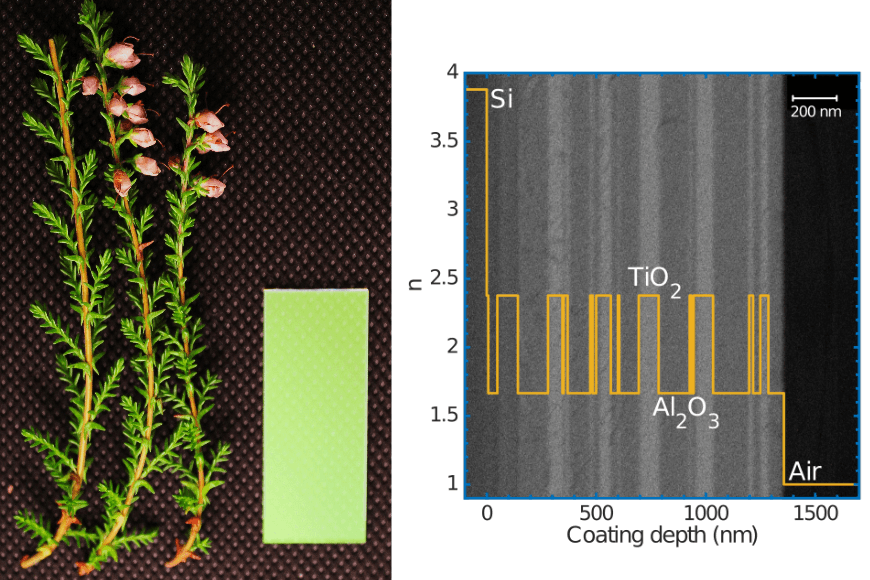
On a modern battlefield a key role is taken by competition between development of imaging technology for the purpose of detection and identification, and development of camouflage technology for better concealment. In the recent years hyperspectral imaging has improved in cost and portability to soon become a common part of soldiers' arsenal, allowing to defeat current camouflage materials based on small differences in how they reflect light. BioCaMil is a project aiming to use the expertise of Surface Science Group in physics of light in thin films to develop the next generation of biomimetic hyperspectral camouflage. The project has received funding from the Scientific Advisory Board for Defense (MATINE) of Finnish Ministry of Defense.
Development of spectral camouflage materials is limited by the pigments and binders used to colour them, with spectral response coarsely fitting a narrow band of light wavelengths in visible and near-infrared. BioCaMil makes use of a well-understood technology for optical coatings - dielectric multilayer thin films - to create camouflage coatings precisely mimicking natural materials in a wide spectral range. Coatings investigated in this project consist of alternating layers of two dielectric materials - titanium dioxide (TiO2) and aluminium oxide (Al2O3), creating interference between the light reflected at interfaces within. By adjusting the thicknesses of the layers, the spectral response of the entire structure can be modified.
For manufacturing the coatings the project uses two methods - Ion Beam Sputtering (IBS) and Atomic Layer Deposition (ALD). ALD is an extremely precise thin-film process that allows for close control of properties of the deposited material as well as deposition of conformal coatings on complex 3D substrates. ALD has a long history in Finland - from original development by Tuomo Suntola in the 70s to winning the 2018 Millennium Technology Prize - and Surface Science Group brings together a team of experts in the field of functionalised ALD thin films.
This project focuses on creating spectral camouflage materials mimicking pine bark and green heather in wavelength ranges combining visual (VIS, 400 - 750 nm) and near-infrared (NIR, 750 - 1800 nm), as well as examines surface modification to improve their optical properties. Coatings that have achieved close fit to reference spectra in the entire VIS+NIR range have so far been designed and manufactured, as well applied to curved optical substrates. Materials developed as a part of this project may serve as a base for a new generation of hyperspectral camouflage, as well as advance the state of the art in use of spectral design for defence applications.
Funding source
Finnish Ministry of Defence
People
Tuomas Tinus
Doctoral ResearcherContact persons
Mika Valden
Professor, Vice Dean for Education Mika Valden
Mika Valden
